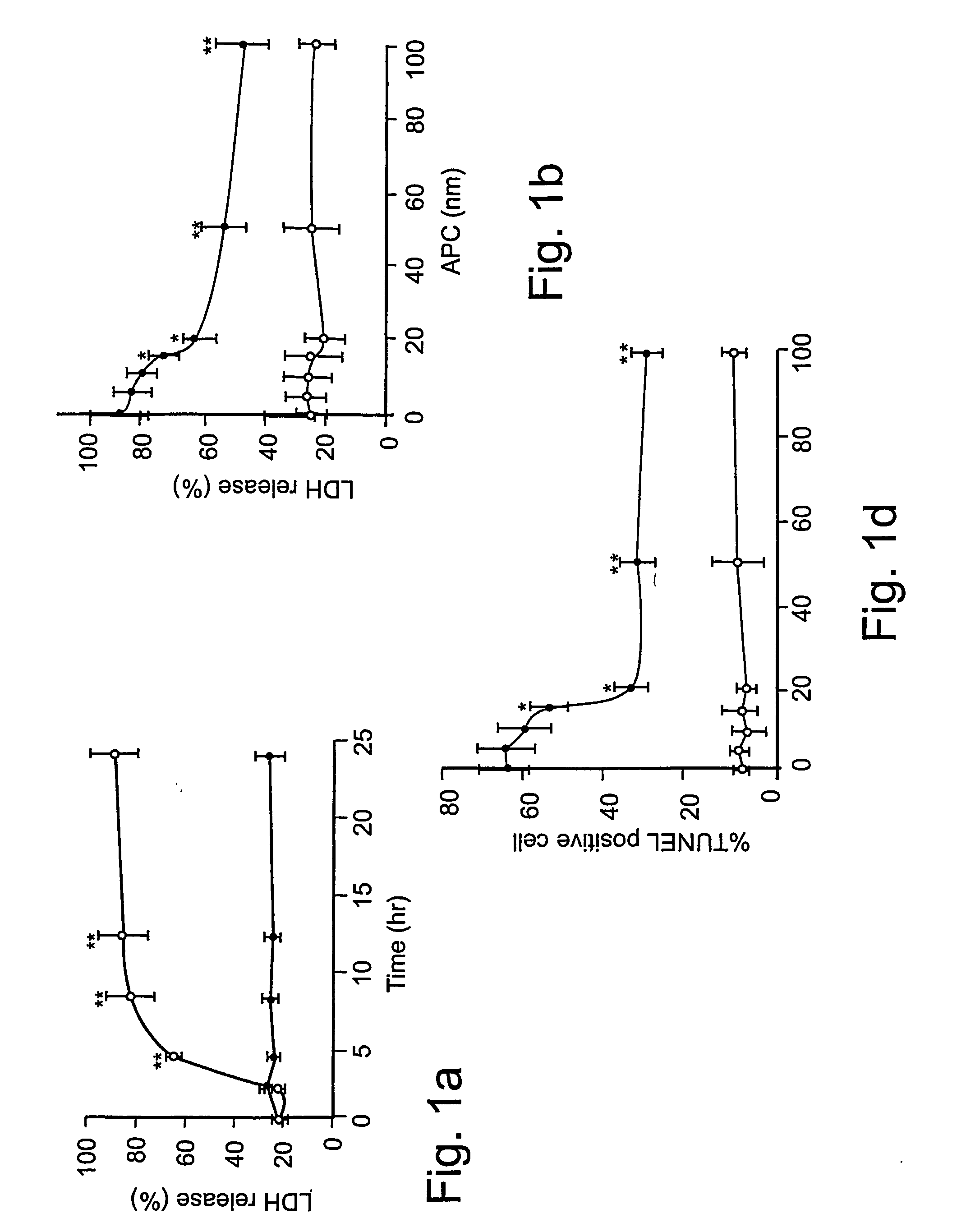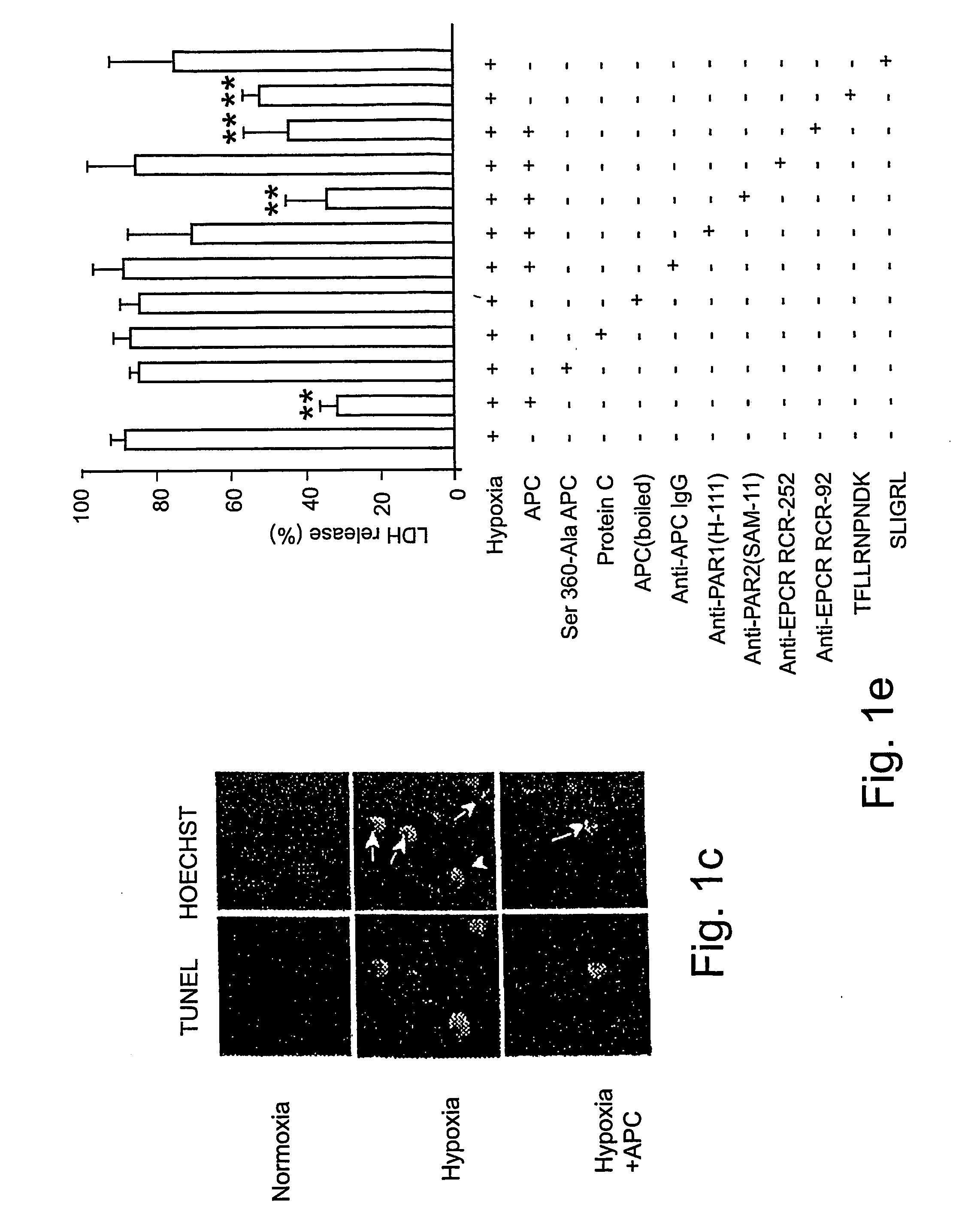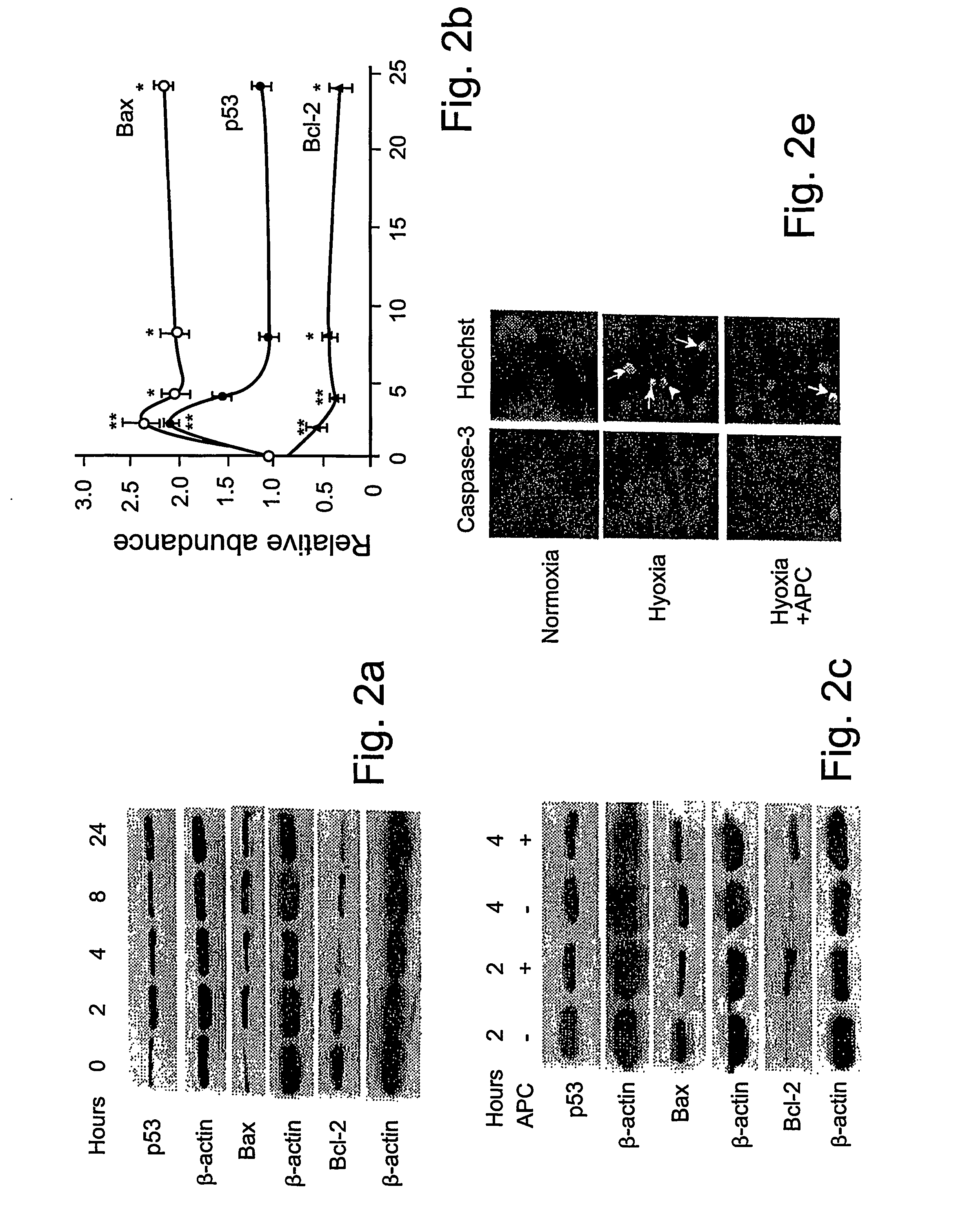Neuroprotective activity of activated protein c independent of its anticoagulant activity
a technology of activated protein and anticoagulant activity, which is applied in the field of activated protein c, can solve the problems of not obtaining data on brain endothelial cells, not generalizing cellular stress studies, and not suggesting neurodegenerative diseases or the prevention of neuronal cell death and injury, etc., to achieve the effect of reducing anticoagulant activity, improving neuroprotection, and promoting cell survival
- Summary
- Abstract
- Description
- Claims
- Application Information
AI Technical Summary
Benefits of technology
Problems solved by technology
Method used
Image
Examples
example 1
[0061] Reagents and antibodies. Human APC, protein C zymogen, mutant Ser360Ala-APC lacking the active site serine, recombinant murine APC, and mouse anti-human APC IgG (C3 antibody) were prepared as described17,24 or using known techniques. For Western blots and immunostaining, we used the following antibodies: p53, mouse anti-human monoclonal, 1:100 (0.4 mg / ml, DAKO); Bcl-2, mouse anti-human monoclonal, 1:100 (0.2 mg / ml, Santa Cruz Biologics); Bax, mouse anti-human monoclonal, 1:100 (0.2 mg / ml, Santa Cruz Biologics); Bcl2-related protein A1 or Bcl2A1, rabbit anti-human polyclonal 1:100 (0.2 mg / ml, Santa Cruz Biologics); inhibitor of apoptosis 1 or clAP1, rabbit anti-human polyclonal 1:100 (0.2 mg / ml, Santa Cruz Biologics); endothelial nitric oxide synthase or eNOS, rabbit anti-human polyclonal 1:100 (0.2 mg / ml, Santa Cruz Biologics); β-actin, goat anti-human polyclonal, 1:2500 (0.2 mg / ml, Santa Cruz Biologics); active caspase-3, rabbit anti-human, 1:250 (1 mg / ml, Promega); Von Will...
example 2
[0081] Reagents and antibodies. N-methyl-D-aspartate (NMDA) was purchased from Sigma (St. Louis, Mo.). Human APC, recombinant mouse APC, protein C zymogen, APC mutants, and mouse IgG against human APC (C3 antibody) were prepared as described17,26. For Western blot analysis or immunostaining we used polyclonal rabbit antibody against human active caspase-3 (1:250, 1 mg / ml; Promega, Madison, Wis.), human Bcl-2 (1:100, 0.2 mg / ml; Santa Cruz Biotechnology, Santa Cruz, Calif.), human 53 (1:1000, Cell Signaling, Beverly, Mass.) and human NMDAξ1 (NR1, 1:1000, 0.2 mg / ml; Santa Cruz Biotechnology, Santa Cruz, Calif.) that all cross react with the corresponding mouse antigens; mouse NR2A (1:500, 1 mg / ml; Upstate Biotechnology, Lake Placid, N.Y.), mouse Bax (1:100, Chemicon, Temecula, Calif.) and polyclonal goat antibody against human β-actin (1:2, 500, 0.2 mg / ml; Santa Cruz Biotechnology, Santa Cruz, Calif.) that cross-react with mouse β-actin. All antibodies against PARs were from Santa Cruz...
PUM
| Property | Measurement | Unit |
|---|---|---|
| body weight | aaaaa | aaaaa |
| body weight | aaaaa | aaaaa |
| pH | aaaaa | aaaaa |
Abstract
Description
Claims
Application Information
 Login to View More
Login to View More - R&D
- Intellectual Property
- Life Sciences
- Materials
- Tech Scout
- Unparalleled Data Quality
- Higher Quality Content
- 60% Fewer Hallucinations
Browse by: Latest US Patents, China's latest patents, Technical Efficacy Thesaurus, Application Domain, Technology Topic, Popular Technical Reports.
© 2025 PatSnap. All rights reserved.Legal|Privacy policy|Modern Slavery Act Transparency Statement|Sitemap|About US| Contact US: help@patsnap.com



